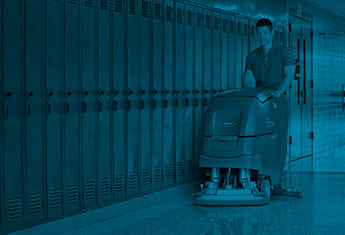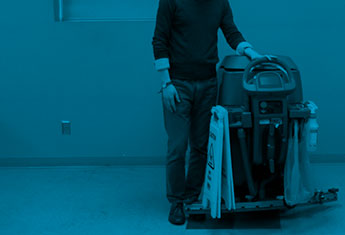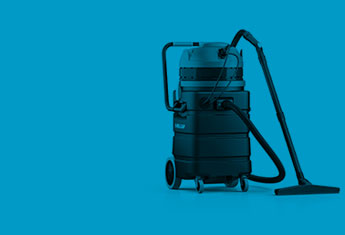Your shopping cart is empty.
The 7 Most Common Mistakes in Commercial Floor Cleaning
Posted in Best Practices, Cleaning Challenges,
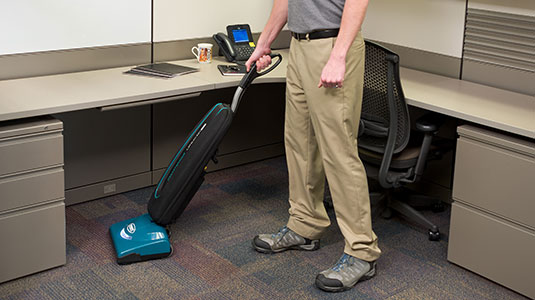
Almost everyone has cleaned a floor before. Sweeping and vacuuming are often some of the first household chores we give to kids. So it’s easy to think of cleaning commercial floors as just “scaling up” that basic, common knowledge. But the reality is that it’s easy for even experienced facility care professionals to make common mistakes. Here are seven of the most common faults we see:
1. Not cleaning the floors daily
Not every space in your facilty gets heavily used every day — so maybe it doesn’t need to be cleaned every day? Appearances can be deceiving, and just because a floor looks clean doesn’t mean there’s not dust present. After even a day of minimal use, most floors have a thin layer of miscroscopic dust. You can’t see it, but this dust can still prematurely dull and wear your carpet or floor finish. Spending the time to do basic floor cleaning — daily vacuuming of carpet and dusting of hard floors — can save you money in the long run.
2. Not prepping floors before scrubbing
Scrubbing might not be necessary every day — or it might be necessary multiple times a day. It all depends on use patterns in your facility. But however often you’re scrubbing, it’s important to do basic sweeping beforehand to remove the microscopic dust, along with larger dirt and debris. This is particularly important in cold-weather climates in winter, when salt and sand is often tracked inside. Skipping the prep-sweep leads to multiple problems: Scrubbing can just spread all this gunk around, not getting the floors clean. Some types of debris can actually damage or accelerate wear on the flooring substrate. And it can accelerate wear on the autoscrubber, too, leading to additional repair costs and potential premature replacement.
3. Vacuuming wet or damp floors
You should vacuum floors frequently, but if carpet is wet or damp, be patient. Industrial vacuums are powerful and easily suck up moisture along with soils. Unfortunately, moisture can easily damage the vacuum motor, leading to expensive repairs or replacement. The powerful suction means that an industrial vacuum can pull significant moisture out of even slightly damp carpet. If you’re commonly dealing with damp carpet in your facility — such as in winter months when snow and ice are frequently tracked in — consider using a wet/dry vacuum or carpet extractor.
4. Using the wrong chemical product
There are many types of flooring, and just as many types of cleaning chemical products — each specifically formulated for wood, carpet, tile, vinly, etc. Mistakenly using the wrong cleaning chemical product — or attempting to use a single chemical product across all surfaces — can easily damage flooring, removing finish, etching tile, eating away sealer, destroying grout, etc. Part of the problem here is that it can be easy to confuse flooring types. Make sure you know exactly which types of flooring are in your environment — and then make sure you’re using the correct, compatible chemical products for each.
5. Using too much chemical
It’s easy to think, “the more, the better,” when it comes to cleaning chemical products. It’s also easy to accidentally or unintentionally use too much — especially if your staff are using the “glug” method, pouring chemicals straight from the bottle without measuring. The truth is that too much is generally too much for flooring. Using too much cleaning chemical when scrubbing can leave excess chemical residue, ultimately creating a hazy, sticky build-up that actually attracts more soil and is harder to remove. On top of that, using too much chemical is just pouring costs down the drain from a budget perspective.
6. Not thinking safety-first
Slips, trips and fall injuries account for nearly 20% of all job-related injuries, costing U.S. employers an estimated $20 billion each year in lost productivity (to say nothing of litigation costs). The irony here is that floor cleaning is typically considered a strategy for preventing safety risks. But the reality is that if your staff aren’t carefully considering safety risks of the floor cleaning process itself, you can end up increasing risk. Make sure you’re using clear signage for wet floors or other safety hazards. While you’re at it, look for autoscrubbers that give you maximum water pick-up, so floors dry faster. If you’re removing mats for cleaning, put signage there as well — and remember to return mats as quickly as possible once floors are clean and dry. Just as importantly, make sure your staff are following all guidelines and best practices for handling cleaning chemicals and operating floor care equipment.
7. Failing to train employees
Often, the root cause of any of the above mistakes comes down to not dedicating the time to thoroughly train all cleaning staff. Make sure you have dedicated onboarding for all new staff — and take the time to regularly re-train staff to keep protocols fresh in their minds. Any time something changes in your floor cleaning program — new flooring, new equipment, new product, etc. — you should be doing specific staff training on the change. Above all, focus on the when, what, how and why:
- When: How often staff should be sweeping, vacuuming and scrubbing each space in your facility.
- What: Which product and equipment staff should use to clean each flooring type.
- How: The detailed protocol for cleaning the floors in each space in your facility, including safety signage, pre-sweeping, allowing floors to dry, etc.
- Why: Make sure staff have a basic understanding of the “why” behind your protocols and best practices, so they can see how cutting corners or not following protocols could lead to poor cleaning outcomes, wasted costs and increased safety risks.
Clean floors are the foundation of a thriving facility. They help you lay the groundwork for safer, healthier indoor environments. And great floor care is one of the easiest things you can do to enhance your brand and improve your guest and staff experience. But the familiarity of floor cleaning can also lead to common mistakes. Make sure you’re not falling into any of these common faults, so you can ensure that your floor care program consistently delivers the shining, safe results you want.
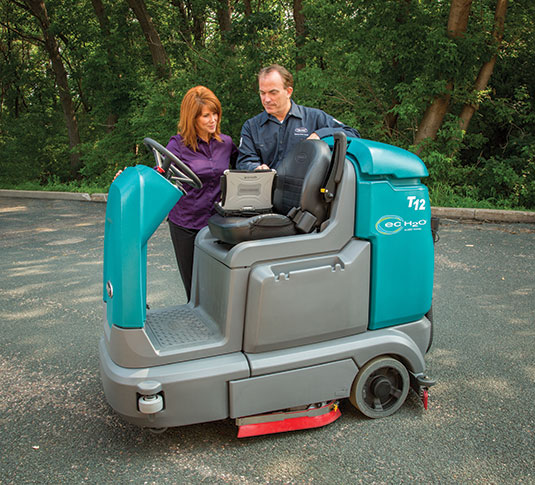
RELATED LINKS
Ready to take your cleaning to the next level?
Whether you are requesting a product demonstration or a quote, ordering parts, or making a service appointment, you've come to the right place. Tennant professional representatives are ready with answers to your questions, and we look forward to showing you how much we appreciate your business.


